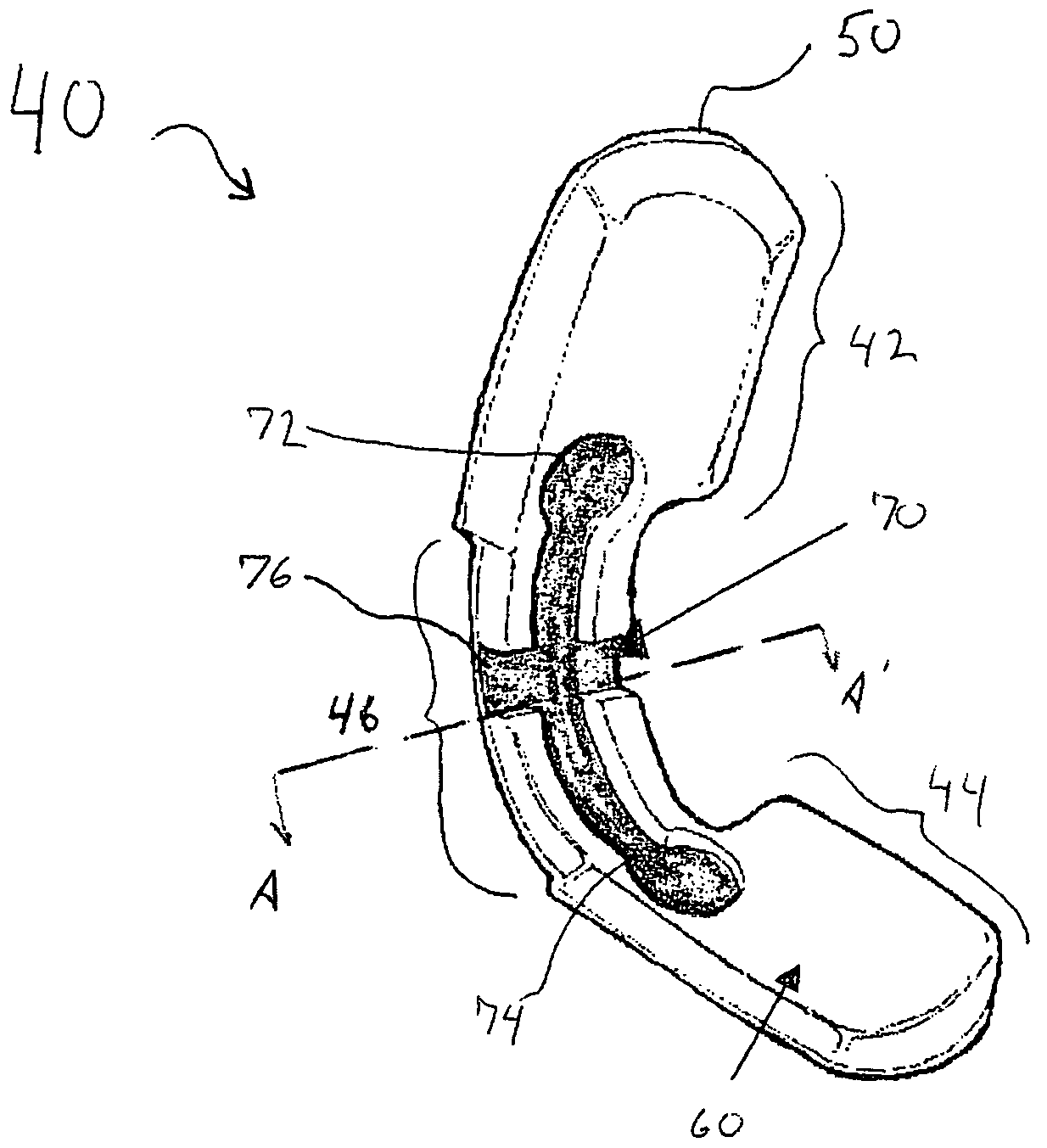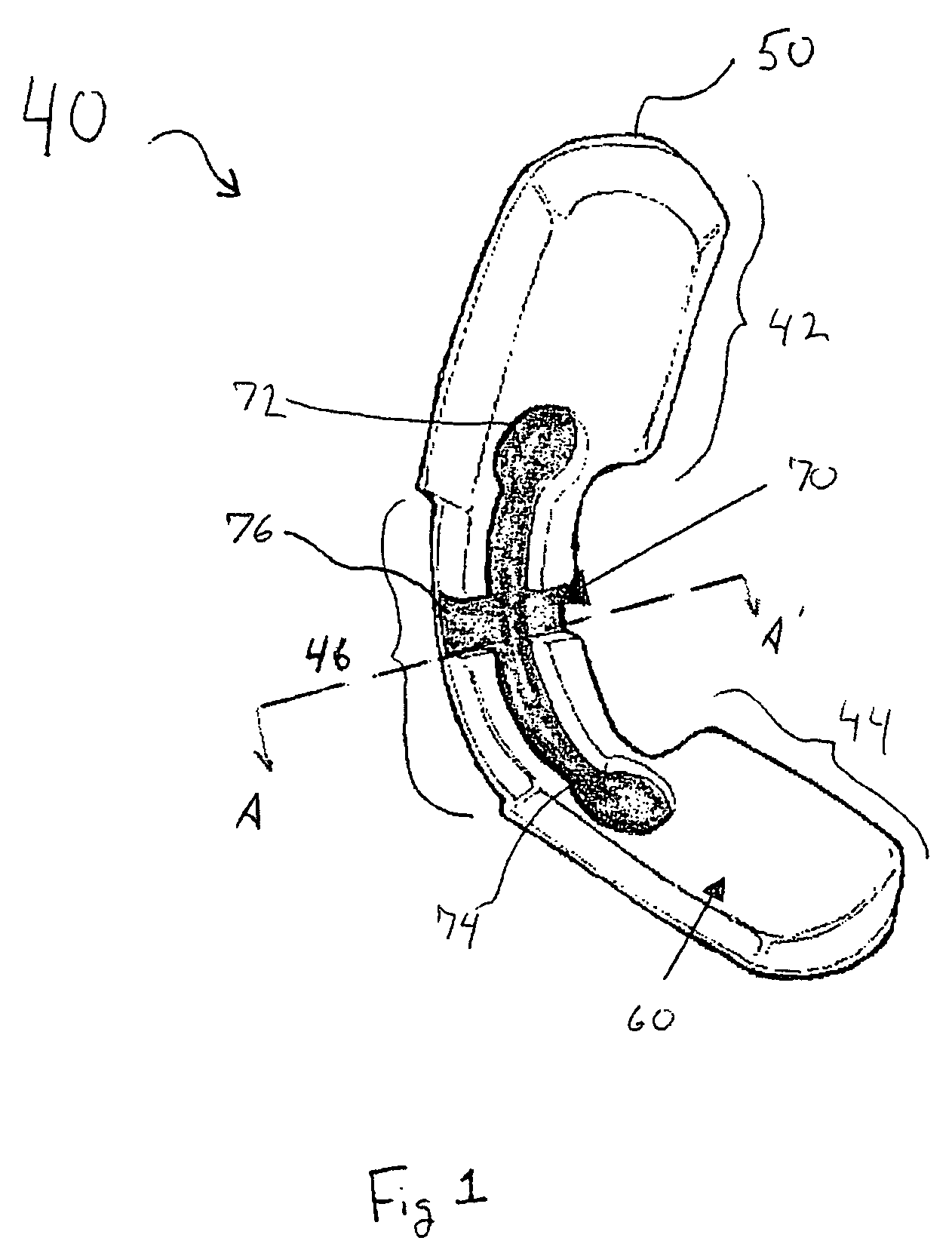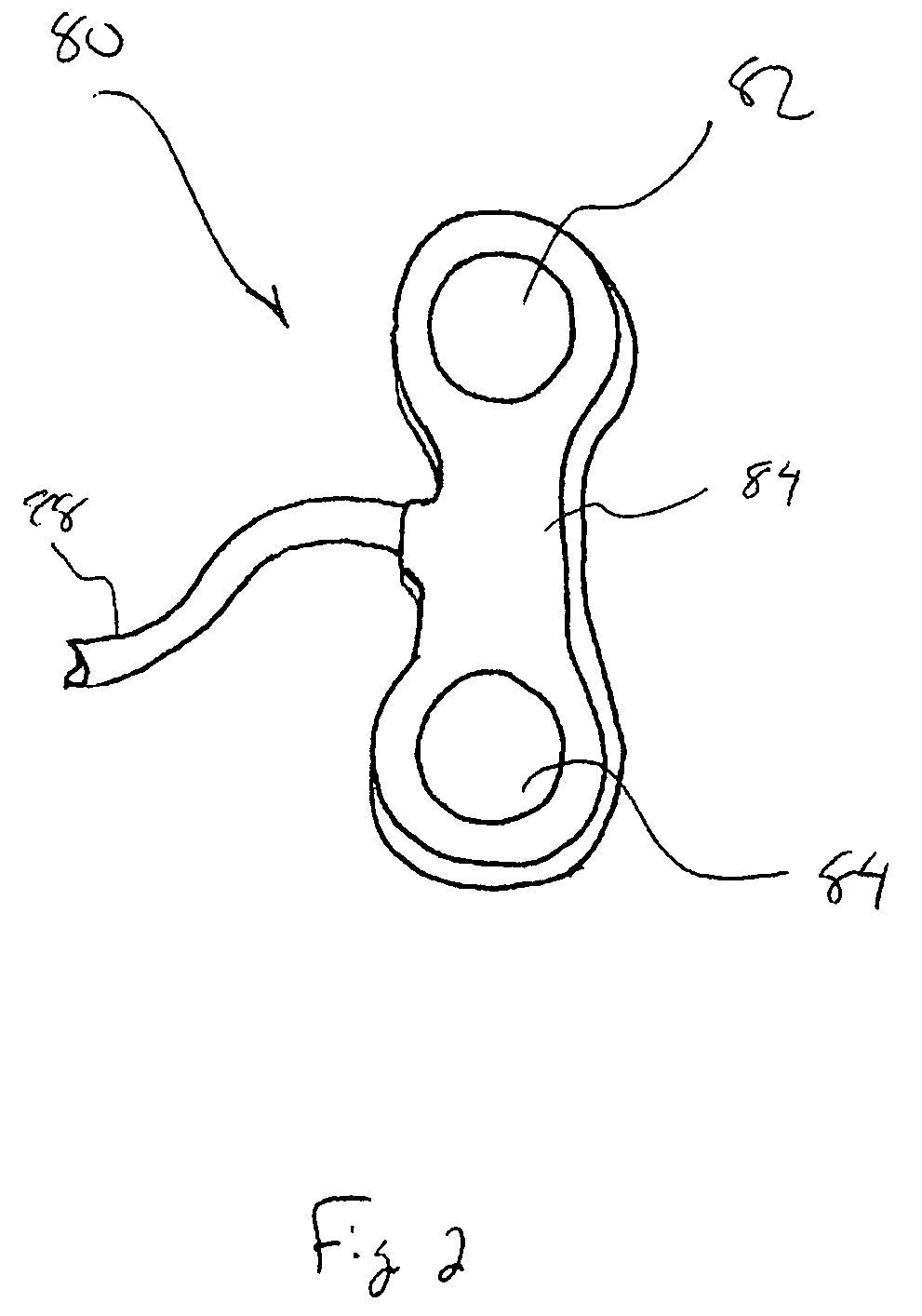Finger sleeve sensor holder
a sensor and finger sleeve technology, applied in the field of holders, can solve the problems that the sensor itself may interfere with the physiological parameter(s), and achieve the effect of facilitating the application of the sensor holder
- Summary
- Abstract
- Description
- Claims
- Application Information
AI Technical Summary
Benefits of technology
Problems solved by technology
Method used
Image
Examples
first embodiment
[0036]FIG. 1 shows the sensor holder 40. The sensor holder 40 contains a deformable backing layer 50 that makes up the outside surface or “shell” of the sensor holder 40. In accordance with the present invention, the deformable backing layer is both plastically deformable to allow the sensor holder to maintain a desired shape and elastically deformable to provide a resilient spring-like holding force, as will be more fully discussed herein. Interconnected to the inside surface of the deformable backing layer 50 is a patient interface layer 60 for providing a gentle interface with a patient appendage. The inside (i.e., patient side) surface of the patient interface layer 60 contains a sensor recess 70 that is utilized to selectively receive a sensor and hold the sensor relative to the sensor holder. As shown in FIG. 1, the sensor holder 40 is formed substantially as an elongate member that is particularly apt for application to a finger (see FIG. 4). Referring again to FIG. 1, it is ...
third embodiment
[0048]FIG. 8 shows a deformable sensor holder 200 in accordance with the present invention. In this embodiment, the sensor holder 200 contains first and second members 210, 220 that are substantially rigid in comparison with a deformable interconnecting member 230. As will be appreciated, in this embodiment, all deformation of the sensor holder 200 is isolated in the interconnecting member 230. This allows the first and second members to be pre-formed to interface with a particular patient appendage. As shown, the first and second members 210, 220 are formed to matingly receive a finger and in this regard each contain a finger trough 240. As will be appreciated, utilizing the finger troughs 240, the sensor holder 200 is able to better conform to a patient finger and to provide added light blocking characteristics for a sensor that may be inserted within the troughs 240.
PUM
 Login to View More
Login to View More Abstract
Description
Claims
Application Information
 Login to View More
Login to View More - R&D
- Intellectual Property
- Life Sciences
- Materials
- Tech Scout
- Unparalleled Data Quality
- Higher Quality Content
- 60% Fewer Hallucinations
Browse by: Latest US Patents, China's latest patents, Technical Efficacy Thesaurus, Application Domain, Technology Topic, Popular Technical Reports.
© 2025 PatSnap. All rights reserved.Legal|Privacy policy|Modern Slavery Act Transparency Statement|Sitemap|About US| Contact US: help@patsnap.com



